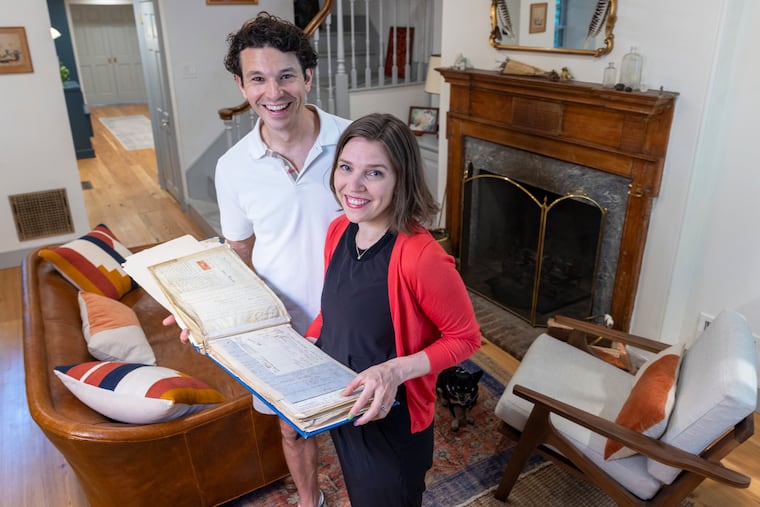Queen Village rowhouse from 1700s gets its latest makeover, this time for a family of four
It's a charming historical home that "only Philly could provide," says the owner.

Falling down the steep stairs from the attic four times was a sign to John Viscardi that there was much work to be done before he and his wife, Molly, could live in their dream house.
The Queen Village rowhouse, built in the mid-1700s, had already gone through several incarnations, including loving stewardship by a local judge who chronicled its history and total abandonment at some point in the 1960s.
In 2018, with their first child born and another expected, the Viscardis, moving from the Graduate Hospital neighborhood, were looking to meet the requirements of both the city’s historical commission and their family.
“We looked all over the city,” recalled John, an opera singer. “We wanted a home only Philly could provide — Philly and a few other cities like Boston and Baltimore. The charm, the beautiful layout … .”
So they hired architect Kevin Kaminski, principal of the firm Kaminski + Pew, to, in John’s words, “honor the history of the home and catch the vibe of the house.”
The vibe was reflected in a chronicle of deeds, photos and memorabilia assembled by Common Pleas Court President Judge Norris S. Barratt, who lived in the house from 1896 to 1910.
Barratt’s chronicle of vellum and fading script, handed down to succeeding owners, made the house an even more intriguing prospect, said Molly Viscardi, chief operating officer of a company that sets up medical house calls and arranges hospice care.
Although the house is not in a historic district, it is registered with the Philadelphia Historical Commission, which was particularly interested in preserving the gambrel roof, a symmetrical, two-sided roof with two slopes on each side. It is a rarity in Philadelphia. Much of the renovation went to support the roof and is not plainly visible.
Kaminski planned a 300-square-foot addition to the third floor to accommodate the growing Viscardi family, but the commission wanted the connection to the addition to be through an existing dormer window. Difficult but doable.
“A lot of people find the historical commission challenging,” Kaminski said. “I think they get a bad rap.”
The renovations took most of 2020. “We worked diligently with the contractor to help maintain the existing details where possible,” Kaminski said, “and layer a sympathetic design aesthetic to blend old and new.”
“The house was in basically good shape,” John said. “It was last upgraded in the 1960s. We tried to keep a light hand.”
Kaminski raised ceilings, added windows, salvaged brass grills, enlarged the kitchen, and converted an existing adjacent room into a playroom for the children, now 6 and 4. He also removed some heart pine flooring from the old kitchen and used it in the upper floors.
He converted the attic into the primary bedroom and in the process made the stairs less of a hazard. This left the second floor free for the children’s bedroom, which included a book nook — “their favorite place,” John said.
Generally, John said, they wanted the house opened up to admit more natural light.
“We tried to be as good custodians as we could,” he said.
Have you solved a decorating, remodeling, or renovation challenge in your home? Tell us your story by email (and send a few digital photographs) to properties@inquirer.com.